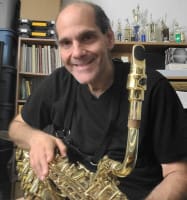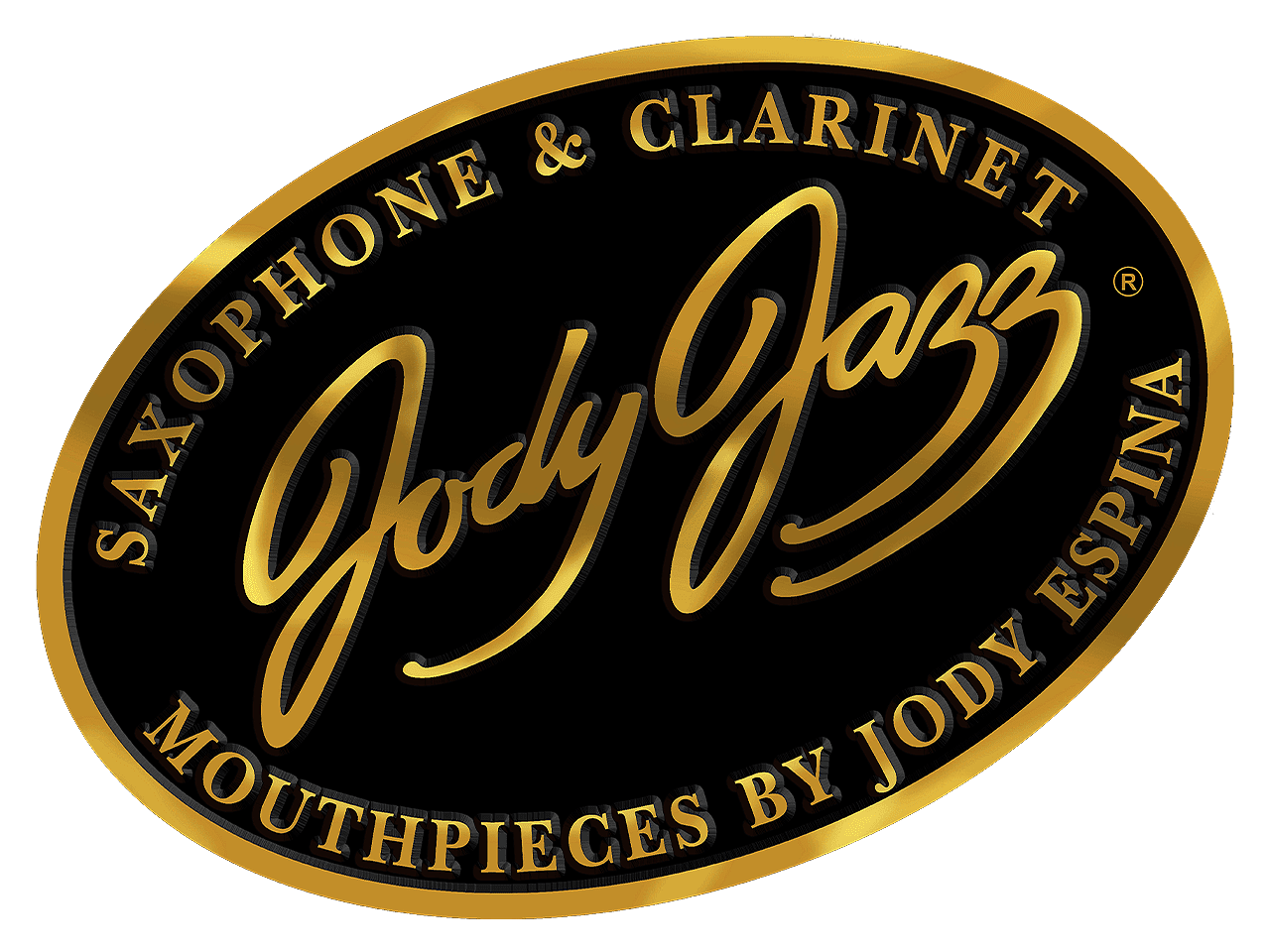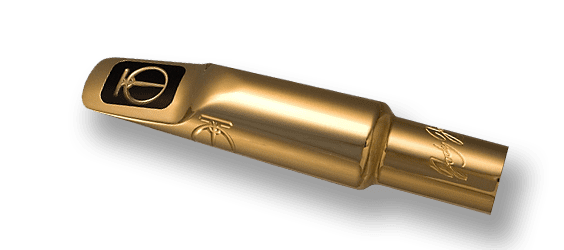What Is the DV Baritone Saxophone Mouthpiece?
Jody Espina has introduced the concept of Golden Section Proportions to the art of high end saxophone mouthpiece design. This perfect chamber/bore/facing combination will result in an extraordinary playing experience for you.
Effortless Power & Beauty
Here, nature, science and imagination combine to create a revolutionary new saxophone mouthpiece. Jody Espina has designed the JodyJazz DV (U.S. Patent No. 7,470,844) using proportions and principles found in nature. For the most effortless playing experience of your life, we invite you to try the DV.
Three Goals in Creating the DV Series of Saxophone Mouthpieces
- To create the most efficient sax mouthpiece possible. That means that there are more harmonics present in the sound and therefore the projection of this Baritone sax mouthpiece is huge.
- To eliminate the annoying shrillness that is associated with loud bright Baritone saxophone mouthpieces.
- To have a big fat mid-range and bottom end that has never been present before in a Baritone sax mouthpiece with strong projection.
JODYJAZZ ARTIST TESTIMONIALS

“Jody, This mouthpiece is so complete. It’s perfect just the way it is. I love the thick heavy sound it gets. I can’t wait to play it in the Duke Ellington Orchestra tonight.”

“…it’s a thing of beauty – the sound is warm, very dark and wonderful. Try it, I think you’ll like it. I’m loving it! Thanks Jody, great work!”
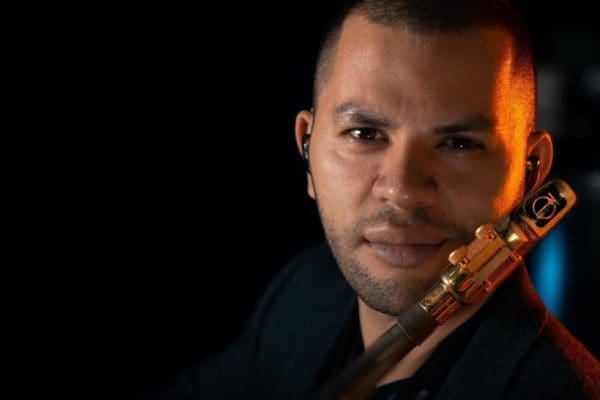
“From the first moment I tried the JodyJazz mouthpieces I knew that my search for the perfect mouthpiece was over. Versatility, power, easy response and tuning are just some of the features that make me feel unconditionally love these mouthpieces. Never before have I felt so much freedom to express myself when I play like now that I have the JodyJazz mouthpieces.” In Spanish “Desde el primer momento que probé las boquillas JodyJazz supe que mi búsqueda por la boquilla perfecta había terminado. Versatilidad , potencia,fácil respuesta y afinación son sólo algunas de las características que hacen que ame incondicionalmente estas boquillas. Nunca antes sentí tanta libertad para expresarme al tocar como ahora que cuento con las boquillas JodyJazz.”
JodyJazz DV Baritone Sax Mouthpiece Price: $750
The mouthpiece comes with a Rovner Star Series Ligature, Cap, Deluxe Mouthpiece Pouch and Metal Canister. Free domestic UPS Ground shipping included. (Click “BUY NOW” button to see overseas shipping)
$750.00
JodyJazz DV Bari Sax Mouthpiece Available Tip Openings
- 6 = .100
- 7 = .110
- 7* = .115
- 8 = .120
- 9 = .130
- 10 = .140
Do you need a facing comparison chart?
CLICK HERE to compare JodyJazz mouthpieces with other brands.
Also Available for purchase is our proprietary JodyJazz POWER RING Ligature click here for more info.
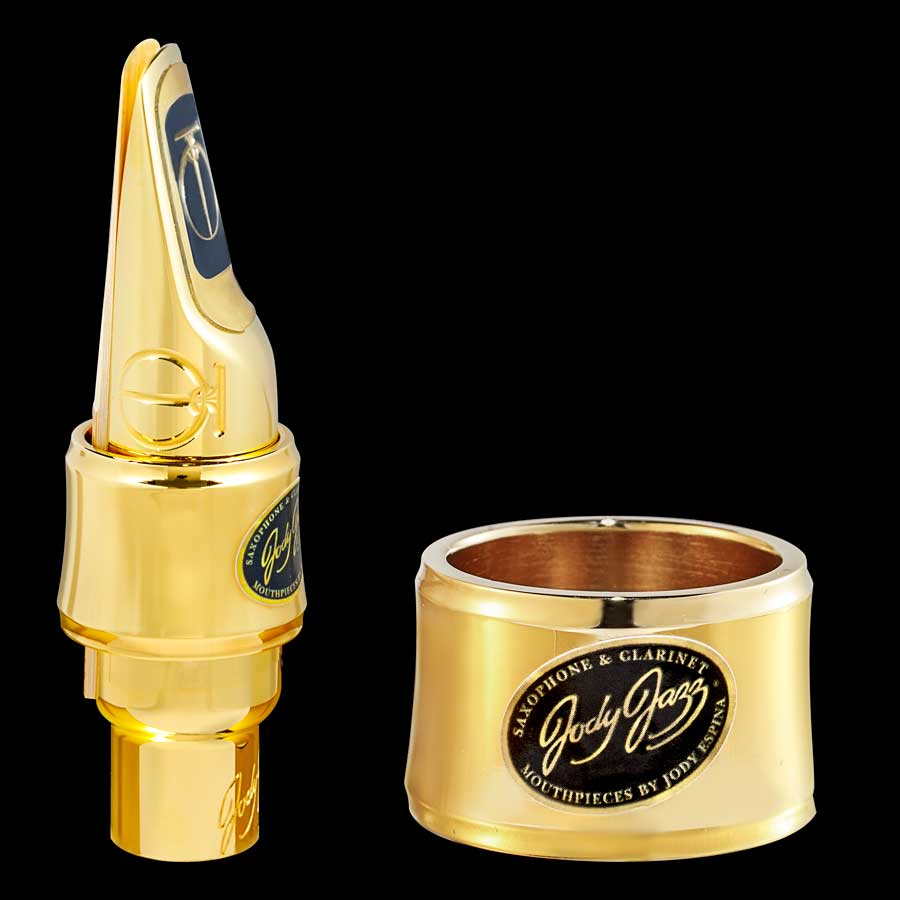
JodyJazz DV Baritone Saxophone Mouthpiece Demonstration by Jody Espina
Jeff Coffin plays the DV Baritone
Jason Marshall plays the DV Baritone at the Montreal Jazz Festival
Jeff Coffin plays the DV Baritone with Caleb Chapman’s Crescent Super Band
Jason Marshall plays the DV Baritone with Roy Hargrove & RH Factor
As Seen on Full Page Advertisements
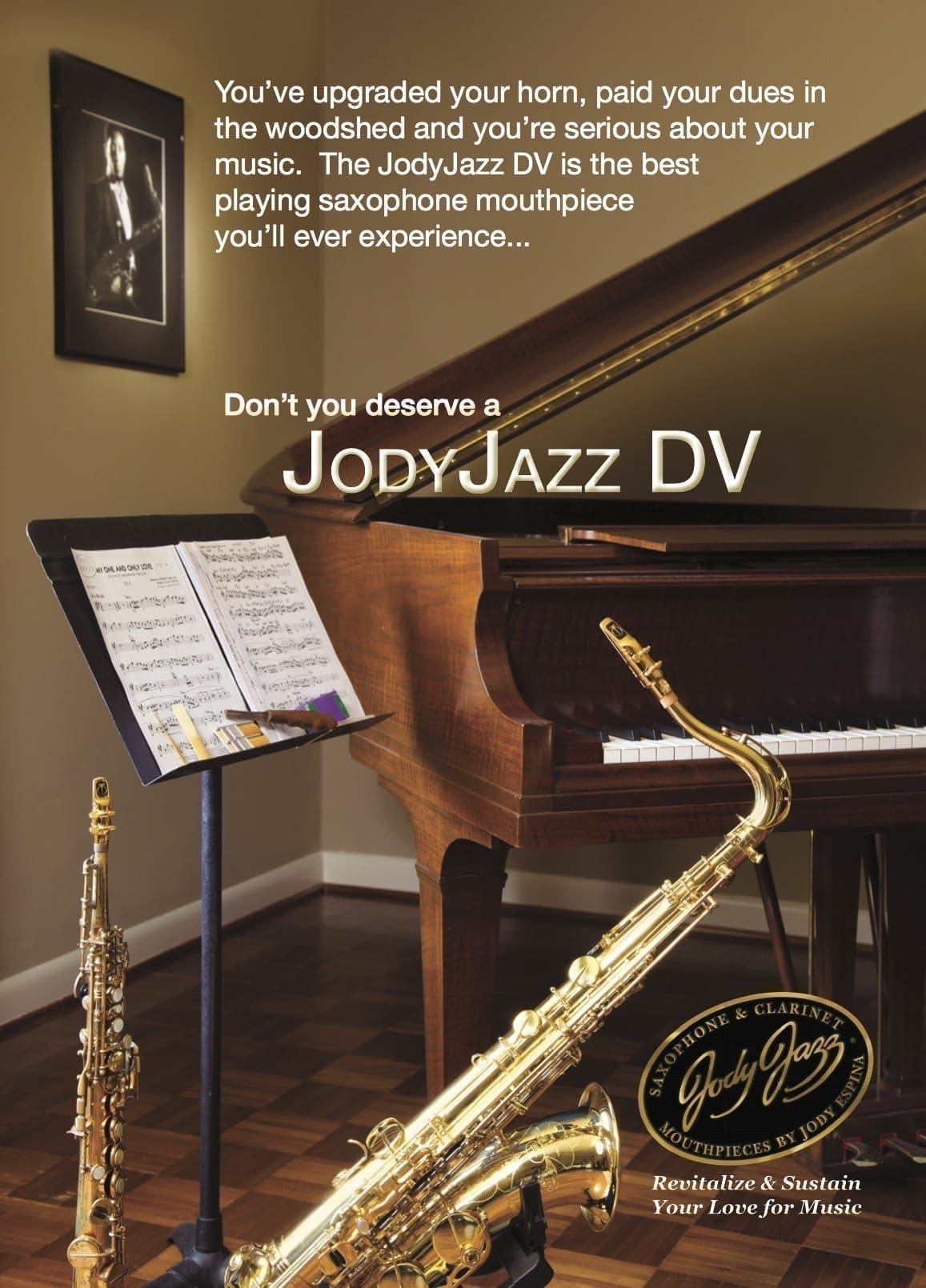
“Dream Come True”
The new facing curve results in absolutely no dead spots in the vibration of the reed. In other words, all notes in all ranges respond equally. This baritone sax mouthpiece has a husky barrel-chested tone while being able to sing and soar over the top of any band. Sub toning and low notes are extremely easy and the altissimo is out of this world. Intonation is spot on. Be prepared to have possibly the most fun you ever have had on the saxophone.
Players who now or in the past have played Guardala, Dukoff, Beechler, Jumbo Java, SR Tech, Vandoren V16, Yanigisawa, or any of the bright mouthpieces out there will be sure to love The DV. This is not just another bright mouthpiece. There will be noticeable differences and improvements.
I have found that many straight ahead jazz players who tend to favor mouthpieces that are just a little brighter than most mainstream dark mouthpieces have a very high chance of making the DV their new Baritone sax mouthpiece. We have had many, many converts who came from playing the most popular hard rubber Jazz piece. These players almost always think that they won’t like a metal Soprano mouthpiece and they are surprised every time.
All saxophone players are amazed to find a saxophone mouthpiece that works so efficiently, where the articulation is clean and one can easily go from low to high and vice versa.
The DV is manufactured on the most sophisticated computer controlled Lathes and Mills, yet the DV benefits from a high degree of hand finishing. The attention to detail in design and finishing given to the DV results in a stunning work of art that plays like a dream come true.
What Does The DV Do?
- Bigger Fatter Tone
- Effortless Playing
- More Harmonics
- Cleaner Articulation
- Power and Projection
- Unbelievable Altissimo
- Improved Intonation
How Does The DV Do It?
- Secondary window
- Golden section proportioning
- Proprietary CNC facing technology
- Perfect radius facing curve
- Perfect reed/Tip match
- 24 kt heavy gold plating
- Hand finished baffle, tip rail and table
- Play tested by Jody Espina
DV Difference
- Phi Proportions – Or the Golden Section Proportioning. The proportions that are found in the Stradivarius Violin, the Nautilus shell, the dolphin, human beings, the Ancient Pyramids and much more, are used for the first time on a saxophone mouthpiece. These proportions result in a chamber that increases harmonics making the sound bigger and richer. For more information about Phi visit at http://www.goldennumber.net

- Secondary Window – The moving sound wave inside of the mouthpiece is now able to strike the vibrating reed above the bore of the mouthpiece instead of the mouthpiece material that is usually there. The effect is similar to a moving ball striking a moving bat. Home Run!

- New Facing Technology and Curve – We have invested in new CNC technology and have come up with a proprietary way of putting on a new facing curve, which is perfect every time.
Special Notes on The DV Bari Saxophone Mouthpiece
Due to the free blowing nature of the DV Baritone and all the DV’s, be prepared to use a harder reed than you normally do. This may or may not be the case for you. The great benefit of this is that a harder reed lasts longer and a harder reed helps the altissimo range. For this same reason, you may want to try a slightly more open tip than normal. For example, Otto Link # 7* players, will usually play a DV 8.

Almost all metal mouthpieces in the past and at the present time are made out of brass which can contain up to 3% lead. The lead in the brass is one of the components that give this particular brass it ’s hardness or rather it’s softness which makes it have a particularly pleasing sound to musicians. Proposition 65 from the state of California requires manufactures to label any products that have compounds in them that have been found to cause Cancer or Reproductive Harm. Lead is one of these Compounds. JodyJazz mouthpieces are electroplated with a layer of copper, then a layer of Nickel, Silver or Rhodium, and then a layer of Gold or Silver. This electroplating ensures that the raw brass is never in contact with the player.
This is Jody Espina and yes myself and my employees have been using JodyJazz Gold or Silver Plated brass mouthpieces for many years. My first JodyJazz brass mouthpiece was made in 2001 and I have continuously been playing JodyJazz brass mouthpieces since. I played my first metal mouthpiece in 1979 on tenor sax and have always used a brass mouthpiece on tenor sax ever since then.
Yes. Ben Webster, Coleman Hawkins Stan Getz, Sonny Rollins, Dexter Gordon, John Coltrane, Michael Brecker, Tom Scott Andy Snitzer are just a few of the 1000’s and 1000’s of players who have played brass mouthpieces.
Everything I expected and hoped it would be!

Great mouthpiece and all, but...
The Best Mouthpiece Ever!
